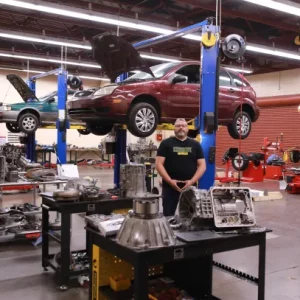In recent years, 3D printing has emerged as a game-changing technology that is revolutionizing various industries and transforming the way we create, manufacture, and innovate. This groundbreaking process has the ability to turn digital designs into physical objects, opening up a realm of possibilities limited only by our imagination. In this blog, we will explore the wonders of 3D printing, its applications across different sectors, and the immense potential it holds for the future.
- Understanding 3D Printing: To grasp the essence of this groundbreaking technology, it is important to delve into its fundamental principles. 3D printing, also known as additive manufacturing, involves layer-by-layer construction of objects using a range of materials. From plastics and metals to ceramics and even food, 3D printers can work with a diverse array of materials, making it a versatile and adaptable technology.
- Applications across Industries: a. Healthcare: 3D printing has revolutionized the medical field, enabling the production of patient-specific implants, prosthetics, and even human tissue. The ability to create customized medical devices has transformed patient care, reducing costs and improving treatment outcomes. b. Aerospace and Automotive: The aerospace and automotive industries have embraced 3D printing to create complex, lightweight parts with enhanced performance. This technology has streamlined the manufacturing process, reduced waste, and enabled rapid prototyping. c. Architecture and Construction: Architects and engineers are leveraging 3D printing to bring their innovative designs to life. From intricate scale models to full-scale building components, this technology has the potential to revolutionize the construction industry, offering faster, cost-effective, and sustainable solutions. d. Fashion and Design: 3D printing has also made its mark in the world of fashion and design. Designers are using this technology to create unique and intricate garments, accessories, and even footwear, pushing the boundaries of creativity and personalization.
- Advantages and Challenges: a. Advantages: 3D printing offers several advantages, such as rapid prototyping, customization, reduced waste, and the ability to create complex geometries that are otherwise difficult to achieve with traditional manufacturing methods. It also promotes sustainability by minimizing material usage and transportation costs. b. Challenges: Despite its immense potential, 3D printing faces certain challenges. These include limited material options, slower production speeds compared to mass production techniques, and the need for skilled operators and designers who can harness its capabilities to the fullest.
- The Future of 3D Printing: As technology continues to advance, the future of 3D printing looks promising. Researchers are exploring new materials, such as bioinks for 3D printing organs and tissues, as well as printable electronics for creating functional devices. Furthermore, the integration of artificial intelligence and machine learning is expected to enhance the efficiency and capabilities of 3D printers, enabling them to learn and adapt on their own.
Conclusion: The rise of 3D printing has unleashed a new era of creativity, innovation, and manufacturing possibilities. From healthcare to aerospace, architecture to fashion, this technology is transforming industries and empowering individuals to bring their ideas to life. As we continue to push the boundaries of what is possible, 3D printing holds the key to a future where customization, sustainability, and efficiency go hand in hand. It is an exciting time to witness the marvels of this technology and anticipate the incredible advancements it will bring in the years to come.





